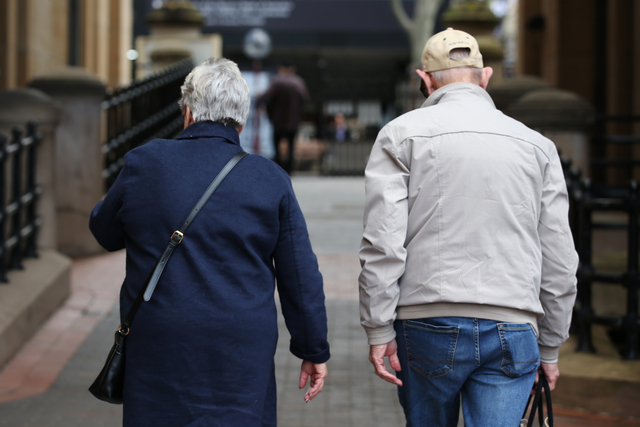An Outer East resident is leading the push to reform the Work Bonus system for pensioners looking to continue working.
The Work Bonus was first introduced in 2009 and aims to help pensioners reduce the amount of any employment income that counts towards the income test to their pension by adding it to a Work Bonus balance.
Initially set at 50 per cent of the first $500 or less of income, it was simplified to the first $250 in 2011, and a concession bank was introduced and it took until 2019 for the threshold to be increased to the current $300 and self-employment to count as ‘gainful income’.
As a result, a single pensioner could currently receive a total of $518 (adding current income free area for age pension of $218) income a fortnight and receive the maximum age pension rate, with anything over reduced by every 50 cents in the dollar. For couples, this is a $680 combined income threshold and is reduced by 25 cents in every dollar over that.
Ferntree Gully resident Greg Jarvis has formed the Fair Go for Working Pensioners movement and said the goal is to increase the Work Bonus to $500 and index it alongside the age pension itself, which he believes will save the government money and increase employment participation among pensioners who wish to work.
“These days ($300 a fortnight) is three quarters to seven eighths of bugger all, anything over $300, your pension is reduced by 50 cents in the dollar… the incentive for someone on a pension to go out and work is just eroded, this $300 isn’t indexed, and it hasn’t changed since July 2019,” he said.
“What we’re aiming to do is get it indexed, to get a price increase to catch up a bit, so that it will improve the participation rates and now if we improve the participation rates to pre-Covid levels, according to my figures and modelling and everything, though I’m not an accountant or a politician, it could generate $200 million nationally every year,”
“If the $500 threshold is enough to regain pre-COVID participation, which I’m not sure if it is, I don’t know what that figure will be, but there’s got to be a sweet spot there somewhere that can increase the participation rate, you’re going to decrease the welfare bill for pension and increase PAYG tax and GST revenue because of additional spending and the like.”
Mr Jarvis’s calculations can be found on the ‘Information’ page of his workingpensioners.com.au website and used a scenario where either an individual in a couple or a single pensioner was working an average of 16 hours a week, 48 weeks a year and earning $40 per hour.
A Department of Social Services (DSS) spokesperson said the Work Bonus benefits Age Pensioners who can and want to work, by disregarding the first $300 of employment income a fortnight from the income test.
“Work Bonus operates in addition to the fortnightly income free area of $218 for a single pensioner or $380 for a pensioner couple, the income free area is indexed each year on 1 July to increases in the Consumer Price Index, allowing pensioners to earn more before their pension is affected,” they said.
“Pensioners are able to build up any unused amount of the $300 in a Work Bonus income bank, up to a maximum amount of $11,800,”
“From 1 January 2024, permanent changes were made to provide all new pension entrants of Age Pension age with a $4,000 Work Bonus starting balance, allowing pensioners to have an extra $4,000 of employment income disregarded from the income test from the start, rather than accumulating these credits over time.”
The 2024 reforms also made the $11,800 maximum balance permanent for all new and existing recipients.
Mr Jarvis said himself and other supporters put a petition to the House of Representatives in mid-2024, but felt the responses so far have mainly stated what the current situation is without addressing the issue.
“You can tell it’s pretty much a cut and paste because you get different responses from different departments with the same phrases, the same attitudes,” he said.
“Currently, I’m just trying to get numbers together so we’ve developed the obligatory website and there’s a section on there where people can fill in their postcode, name, email and register their support, their details aren’t listed on a public list, but it’s their first name and suburb basically and an email is also sent to their local MP,”
“We’re in the throes of trying to get numbers because obviously one voice doesn’t go anywhere.”
There are other potential offsets for elderly Australians that can be accessed:
The Senior Australians and Pensioners Tax Offset (SAPTO) is available both pensioners as well as people of pension age who also meet the Age Pension residency criteria. In the last financial year, the SAPTO was worth a maximum of $2,230 for a single senior and $1,602 for each member of a senior couple.
This is on top of the statutory tax-free threshold and the low income tax offset (LITO), where eligible senior Australians with incomes up to $35,813 (or $31,888 for each member of a couple) pay no income tax in 2024-25 while single senior Australians with incomes up to $43,020 paid no Medicare levy.
Comparatively, most single people below pension age had to start to pay income tax once their annual taxable income exceeds $22,575 and the Medicare levy once their income exceeds $27,222 in the same year.
Mr Jarvis said he works part-time and when he explains his thought process, the common response is that he’s told to work for ‘cashies’, or undeclared income paid in cash.
“That leaves the employer and the employee open for you know litigation and the like but I think a lot of people are heading that way, to avoid your pension deductions and taxation and all that because it’s just not worth working,” he said.
“My personal situation is that I need to work financially to maintain my lifestyle and that’s my choice, I could probably get away with not working but if you go into retirement and not everybody has the funds to be self-funded, especially when you think about when the retirees of today who started work there was no such thing as the superannuation guarantee,”
“Since 2009, Australian wages have gone up 64-65 per cent, the inflation has been 50 per cent and the work bonus has gone up 20 per cent.”
Mr Jarvis believes an increase to the Work Bonus threshold could help boost participation rates in the workforce among pensioners, particularly in industries with high demand.
When the Work Bonus was last boosted in June 2019, 4.29 per cent of aged pensioners reported earnings according to DSS data, which is down to 3.48 per cent as of the most recent figures in March 2025.
Mr Jarvis said there a lot of industries, like his own in truck-driving, that are screaming out for employees.
“Hospitals are screaming out for nurses, there’s a lot of industries like catering, for instance, where they’re having difficulty finding people to work and there’s a dormant workforce out there of experienced qualified people that are just sitting at home,” he said.
“The workforce skill shortage could be alleviated a little bit through one or two or three days a week rather than full time, because us old buggers might have a bit of difficulty with five or six days,”
“As far as the individual goes, activity’s a good thing for your mind and body and if you’ve got, got something to get up for in the morning, that’s probably a healthy thing and that is one thing that even in the responses from government departments,they acknowledge the benefits, financially and socially, of pensioners working.”
You can register support for Mr Jarvis’ cause at workingpensioners.com.au/register-support/.







